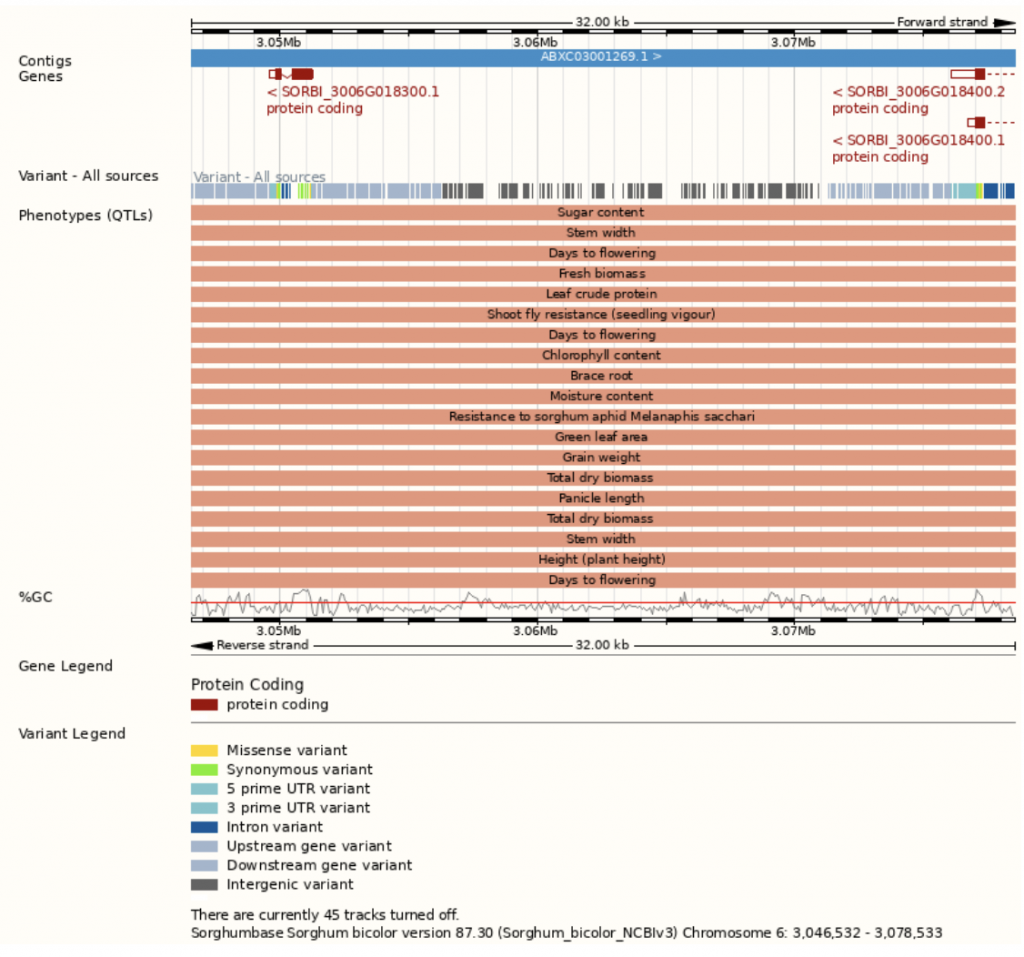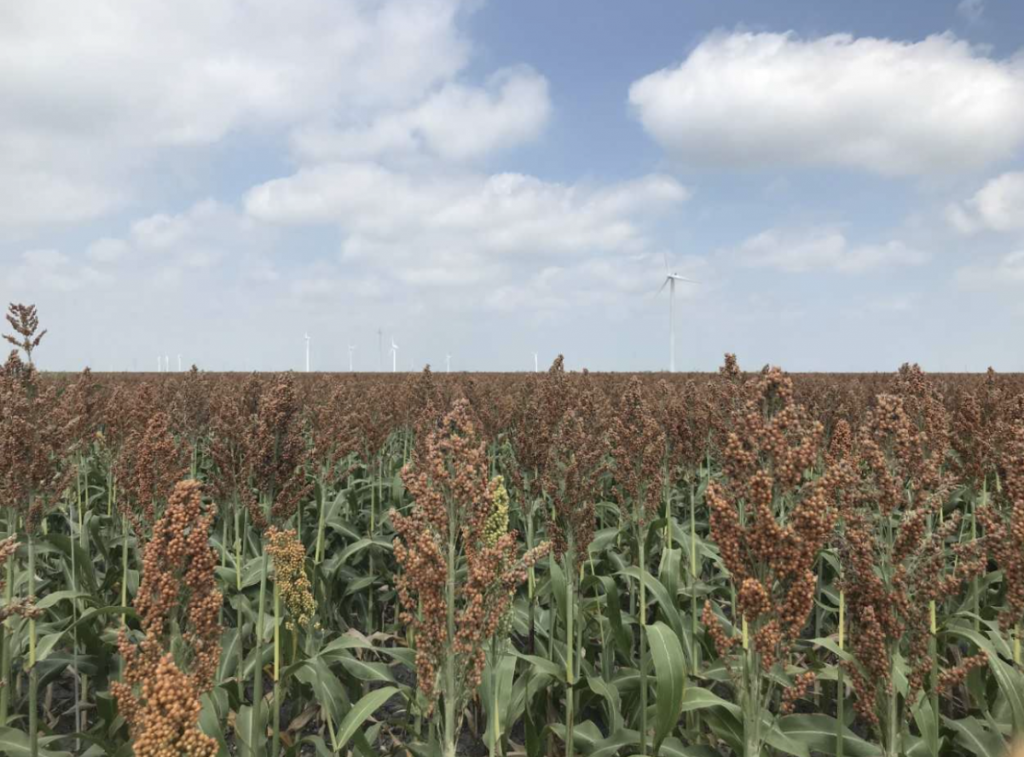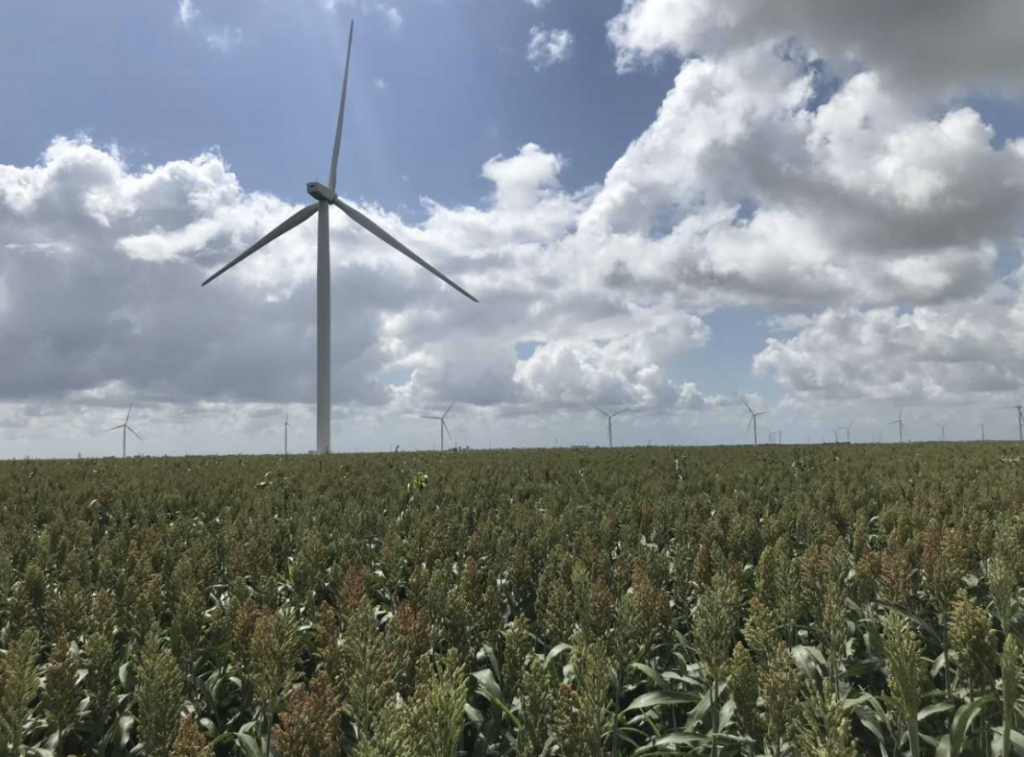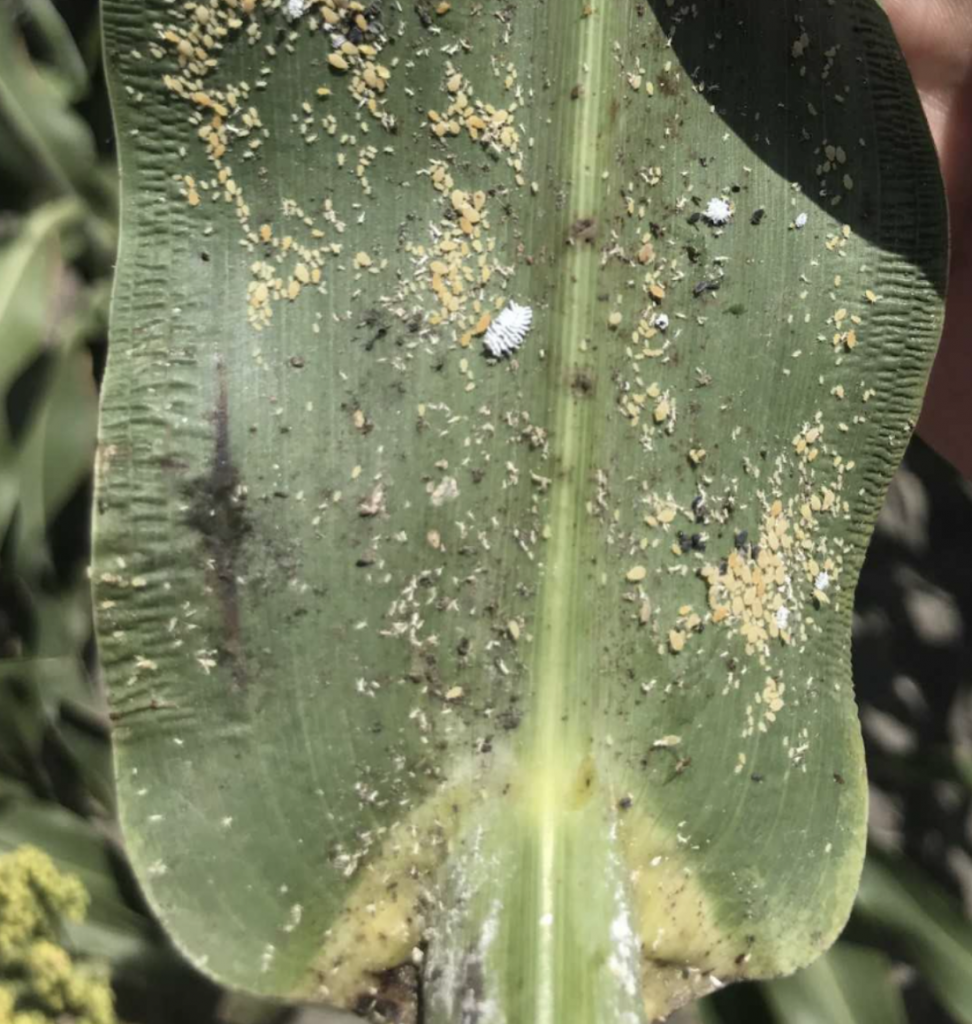Research Provides Support for Using Agricultural Configuration Techniques to Control Melanaphis sorghi
Landscape organization greatly impact the colonization of insect pests and their natural insect enemies in agricultural fields. The configuration and composition of habitats affect the population of pests and their enemies with environments with a higher percentage of non-crop elements like forests or grasslands and wider borders having more insect enemies and herbivores which help control the pest concentration. Temperature and precipitation further influence the population of pest and insect enemies. Melanaphis sorghi Theobald, an aphid first detected in 2013, has been attacking sorghum crops throughout North America. Some fields lost 50% of their crop and certain regions had economic losses that were as high as 19% (Zapata et al. 2018). Scientists and growers are greatly interested in finding ways to control pests in an environmentally friendly way.
In an effort to evaluate the effect of landscape architecture on the population of M. sorghi and sorghum’s natural enemies, Elkins and colleagues at Texas A&M University conducted a two year survey (2019 and 2020) of the abundance of these insects in 42 sorghum fields located in the South Texas Gulf Coast. Overall, in the sorghum fields over the course of both survey years the most prevalent parasitoid was Aphelinus nigritus and the most prevalent natural enemy was Coccinellidae. M. sorghi, on average, was much more abundant in 2020 (101.10 ± 17.81 aphids per leaf) than in 2019 (32.77 ± 11.49 aphids per leaf). This was inversely correlated with the abundance of Aphelinus nigritus; the percent parasitism for 2020 was only 4.8% compared to 30.28% in 2019.
Border size between habitats was positively associated with prevalence of M. sorghi, as well as A. nigritus, and the Coccinellidae (enemy insects). Non-crop landscape composition and diversity was negatively correlated with the presence of enemy insects while having a mixed effect on M. sorghi. The only exception was in the case of waterways, which were strongly positively associated with an abundance of M. sorghi and enemy insects. The authors note that it is difficult to separate out the effects of edge size, landscape diversity, and waterways as they are highly correlated with each other in the areas studied in this research. Generally, greater population densities of M. sorghi and enemy insects are associated with more complex landscapes (in terms of edges), which leads to the aphid being suppressed. Conversely, locations that have low amounts of M. sorghi also have low amounts of its natural insect enemies, which can lead to the rapid growth of the M. sorghi population and the need to recruit insects from outside the area to keep the aphid in check. M. sorghi outbreaks are best kept under control by early enemy response to new infestations.
The research as a whole provides support for using agricultural configuration techniques like habitat borders to naturally control pests like M. sorghi.
This work has increased our understanding of the ecology of a major sorghum pest and its natural enemies across space and time. The results suggest differences in aphid outbreaks between fields may be due to different habitats within the agroecosystem and their ability to alter insect populations within sorghum. These patterns indicate certain landscape configurations increase the likelihood of aphid outbreaks, which can be applied to enhancing predictions on aphid occurrence and the need for additional pest management practices. – Elkins
SorghumBase example:

References:
Elkins BH, Eubanks MD, Faris AM, Wang HH, Brewer MJ. Landscape Complexity has Mixed Effects on an Invasive Aphid and Its Natural Enemies in Sorghum Agroecosystems. Environ Entomol. 2022 May 26:nvac036. PMID: 35639524. DOI: 10.1093/ee/nvac036. Read more
Zapata, S. D., R. Dudensing, D. Sekula, G. Esparza-Díaz, and R. Villanueva. Economic impact of the sugarcane aphid outbreak in south Texas. J. Agric. Appl. Econ. 2018;50(1):104–128. DOI: 10.1017/aae.2017.24. Read more
Related Project Websites:
https://entomology.tamu.edu/people/brewer-mike/




